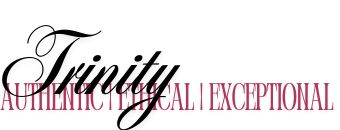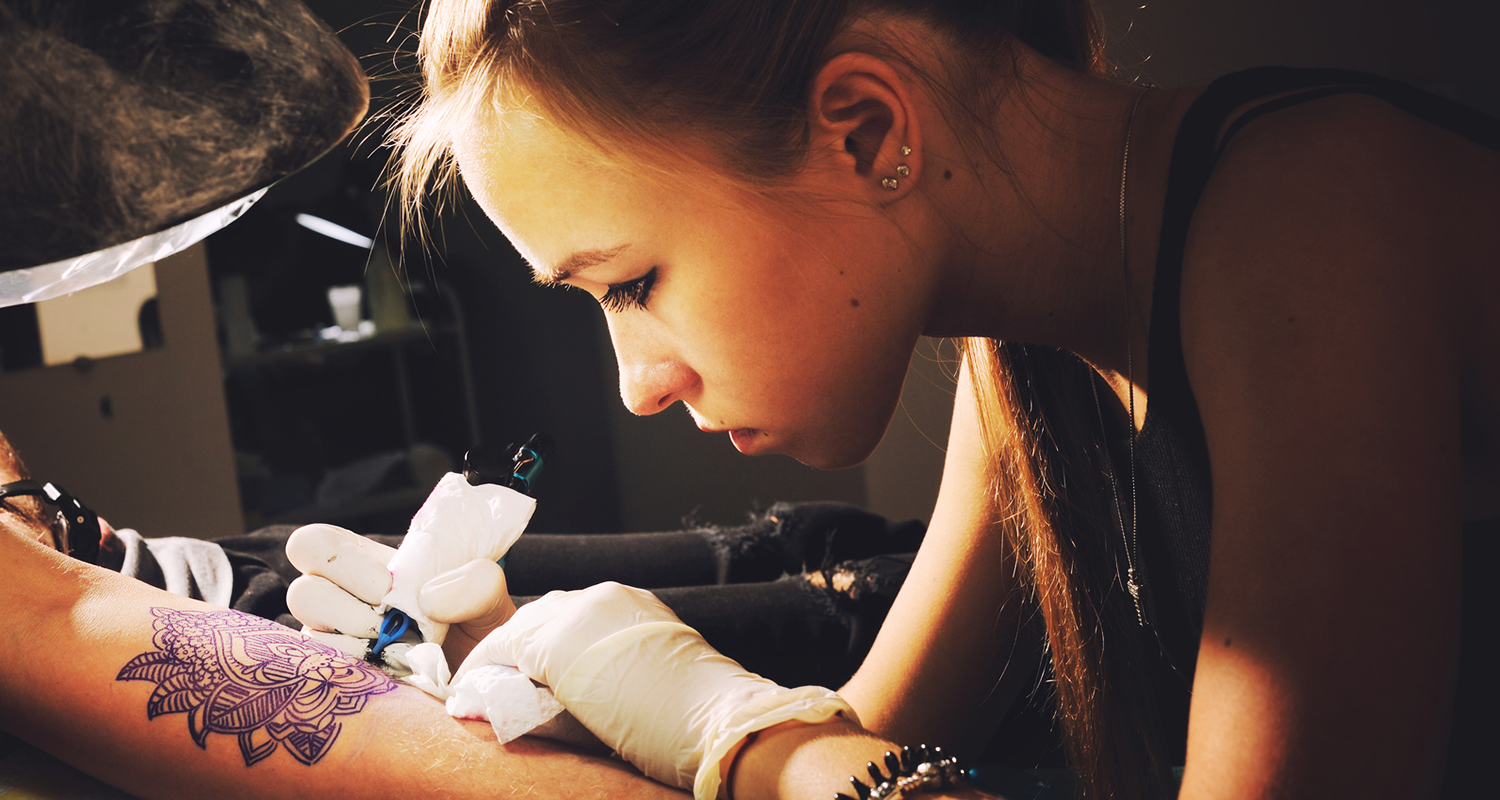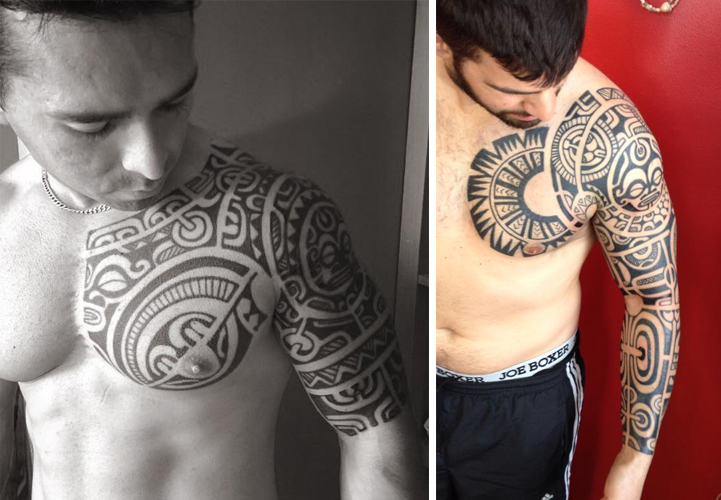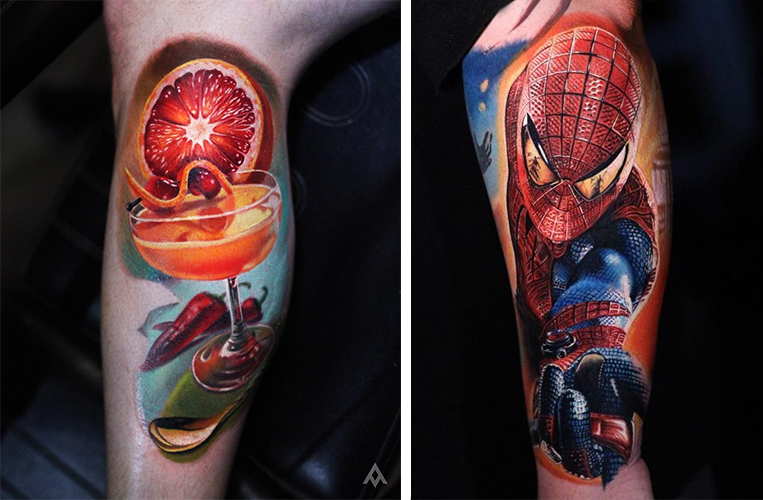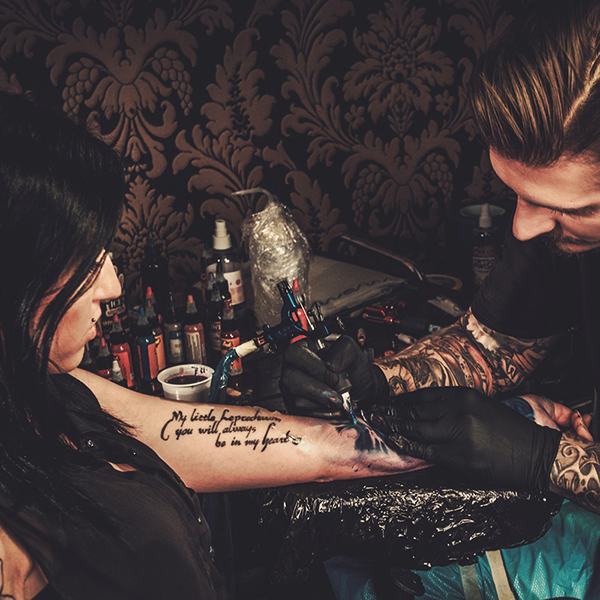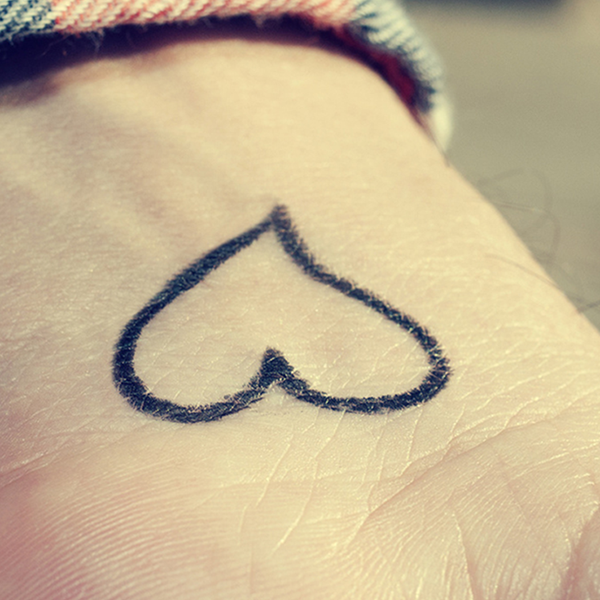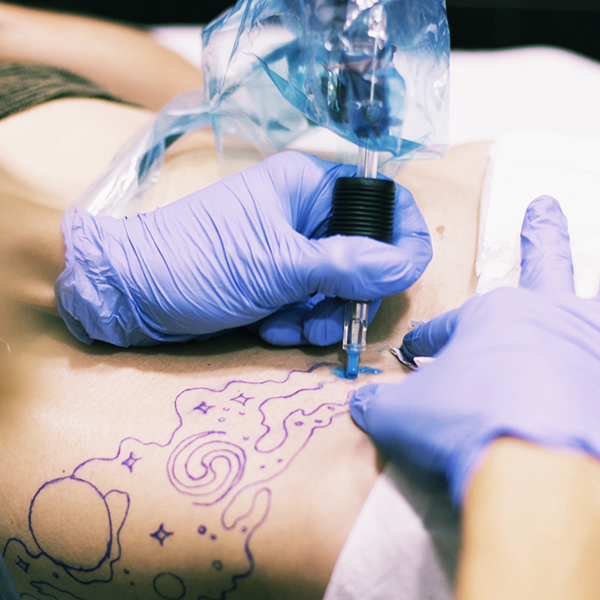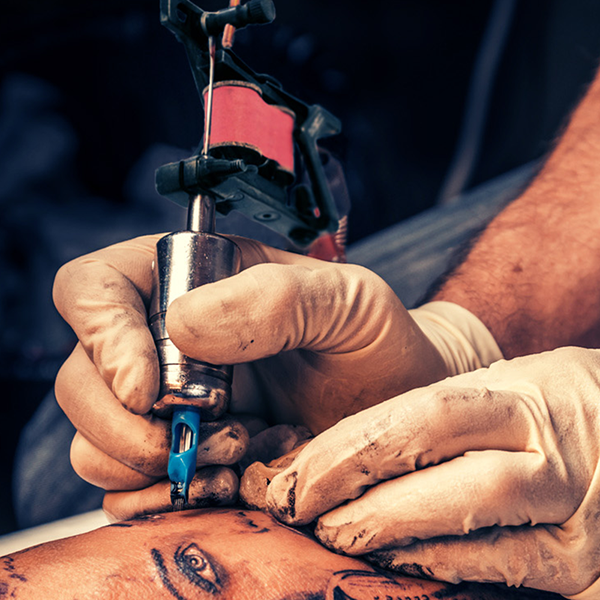As tattooing continues to evolve and grow in popularity, new styles and fresh takes on classics keep popping up thanks to artists pushing the boundaries of what’s possible. Styles that are popular at any given moment can easily be replaced by innovative new approaches in the blink of an eye because lets’ face it: The tattoo community is great at always reinventing itself.
With some many different styles out there, it can sometimes seem impossible to keep track of them all, especially if they happen to fall outside of your chosen area of expertise. But fear not! We’ve put together a comprehensive guide to today’s 10 most popular tattoo styles, from American Traditional to New School.
American Traditional AKA Old School
Bold, eye-catching designs featuring super saturated colours are the key when it comes to American Traditional. The style, which is most often associated with tattoos done by the legendary Norman ‘Sailor Jerry’ Collins, first gained popularity back in the 1930s and were traditionally worn by sailors who chose to get tattooed during brief stops ashore. Laying the groundwork for tattooing as we know it today, American Traditional designs most often include skulls, anchors, roses and pin-ups and are currently peaking in popularity once more.
Tribal
Dating back centuries, traditional Tribal and Polynesian tattoos have basically been around since the beginning of time. Making expert use of bold lines and geometric shapes, this type of tattooing is simple in terms of intricacy, lacking shading and detail. However, masterfully designing tribal tattoos is anything but easy. When executed properly, these tattoos compliment the wearer’s body in a way that makes them look like a natural extension of the client’s skin. Designs should be custom-created and include traditional imagery drawn from the histories of various tribes, such as the Maori. They should also be tattooed with traditional techniques and are often hand poked.
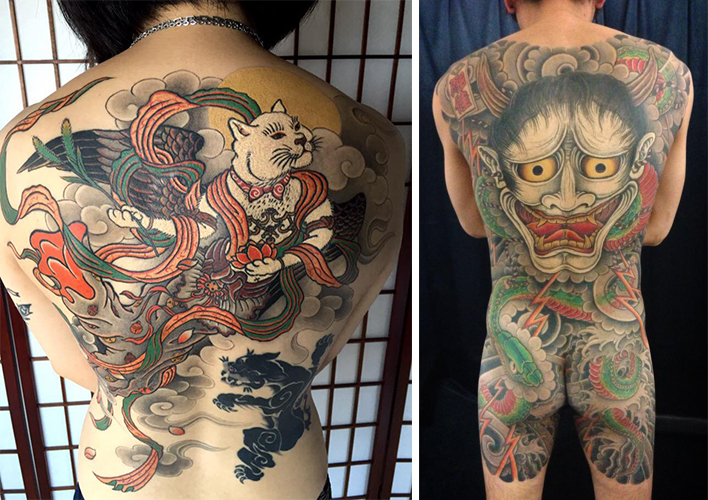
Traditional Japanese
Originally associated with the Japanese mafia, known as the yakuza, Traditional Japanese tattoos most often feature imagery inspired by the folklore and nature of Japan. These designs were originally exclusively tattooed with the tebori, or hand poke, method, but nowadays are also executed with machines. Ancient traditions should be carefully followed when it comes to drawing Traditional Japanese designs (most popular are koi fish, lotus flowers, dragons and warriors) and picking the colour, placement and more. There is also a strong focus on big, bold pieces, such as full sleeves and stunning bodysuits.
Realism
Just like with more traditional forms of art, tattooers specializing in realism strive to trick viewers into thinking they’re looking at the real deal. Making expert use of shading to achieve the desired effects, Realism strives to immortalize the real world around us on skin with tattoos that are meant to look just like photos. Whether it’s an inanimate object, a portrait of a loved one, an animal — you name it — Realism is one of the hardest styles to master, as even the smallest deviation from the subject matter at hand can render the design a complete failure.
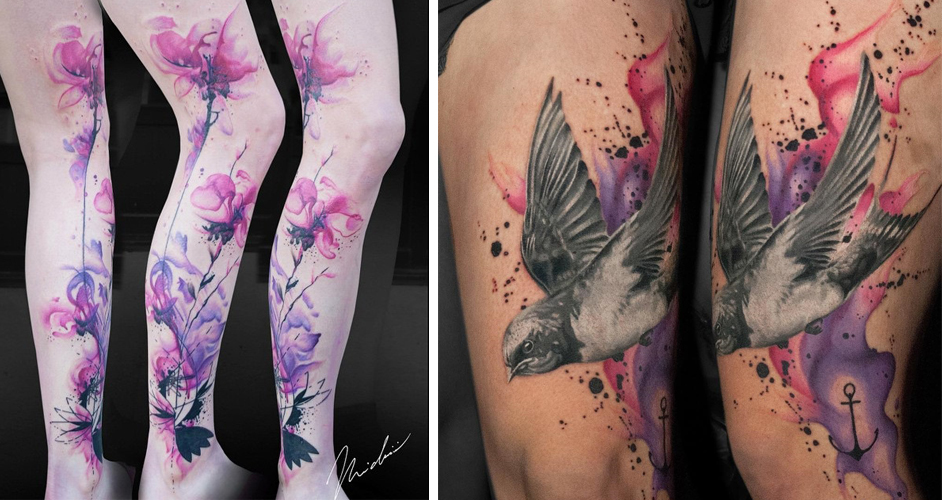
Watercolour
This is, hands down, one of the most popular trends of the moment! The key to a good Watercolour tattoo is pretty self-explanatory: It should look just like a watercolour painting done on skin. Achieving the effect with a needle and ink isn’t easy and artists specializing in the style often spend hundreds of hours perfecting their ability to replicate brush strokes with a machine, as well as the look and feel of watercolour paints on canvas. Most often, there are no (or very few) solid black lines involved in any given design and bright colours are given preference over black and grey.
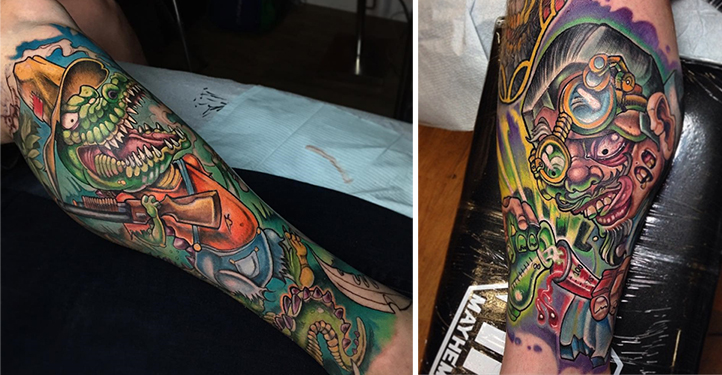
New School
Not one to take itself too seriously, this style includes lots of fun colours and quirky designs that draw inspiration from cartoons and graffiti. Basically, anything goes and the wilder and whackier a design, the better. Embracing exaggerated features and unrealistic proportions, New School is the opposite of Realism and borders on caricature. Its designs include all kinds of outlandish characters, which are oftentimes based on real-life animals and individuals.
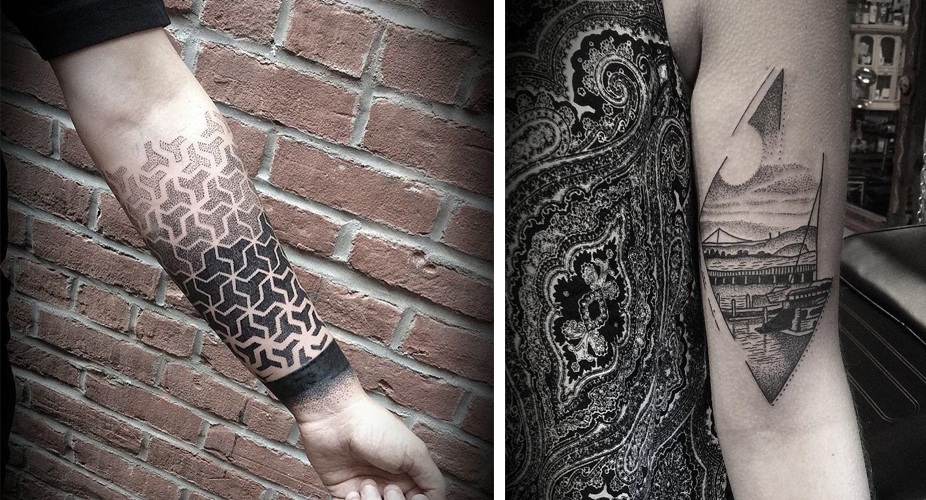
Dotwork
Another hugely popular style that keeps growing in popularity is dotwork, which involves extremely intricate designs created by hundreds, thousands or even more carefully placed dots that come together to form a bigger image. Rather than traditional shading, it’s the spacing between and size of dots that creates desired effects and depth. Needless to say, designing and tattooing these masterpieces requires serious time and skill. The end results are always beyond impressive and totally worth it, however, and the more you look at a certain design, the more details you’ll be able to discover.
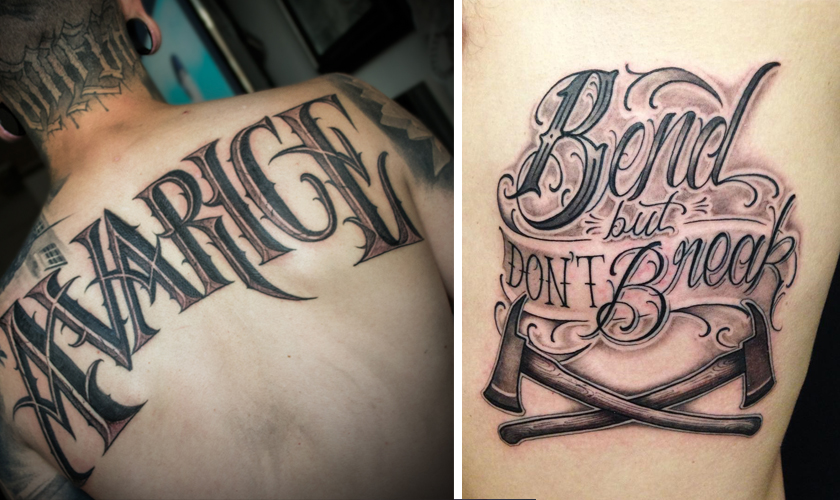
Lettering
Mastering script and lettering may sound simple, but it’s anything but. Not only do artists need to learn how to perfectly execute countless styles and types of font, they need to be comfortable tweaking and dreaming up custom script to compliment both their design and their client’s body. Sometimes, lettering is part of a bigger image. At other times, it’s the star of the show. No matter how big its role is, however, it has to be complimentary to the wearer and all of the elements around it. It’s not enough to simply pull an existing font off the Internet and slap it on someone’s skip. No, lettering requires (and deserves) careful attention to detail and plenty of imagination.
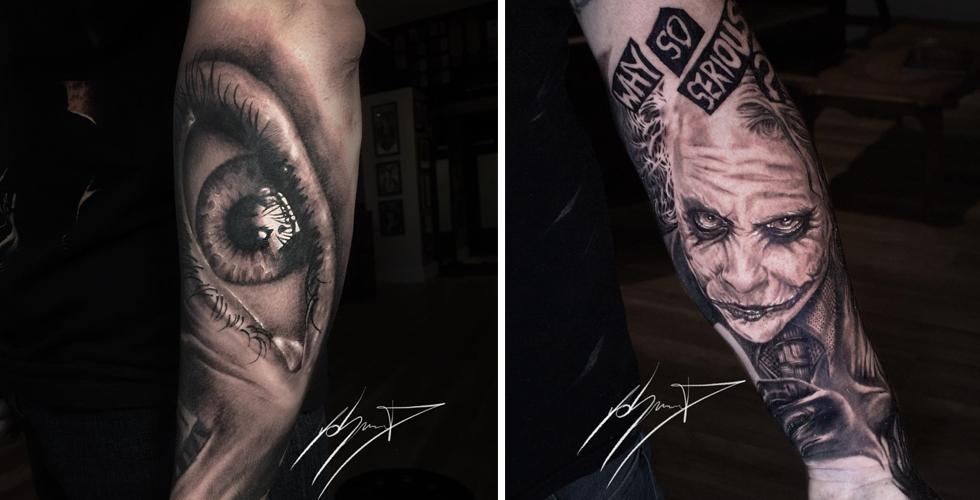
Black And Grey
As with Watercolour, Black and Grey is exactly what you’d expect: tattoos executed exclusively in black and grey. Originally, tattooers had to create shades of grey themselves by watering down black ink to various degrees, but nowadays the process has been made easier by the availability of pre-made grey hues. Staying far away from colour, this style can be combined with any other, but is most often associated with Realism, as black and grey colour combinations offer unrivalled opportunities for shading.
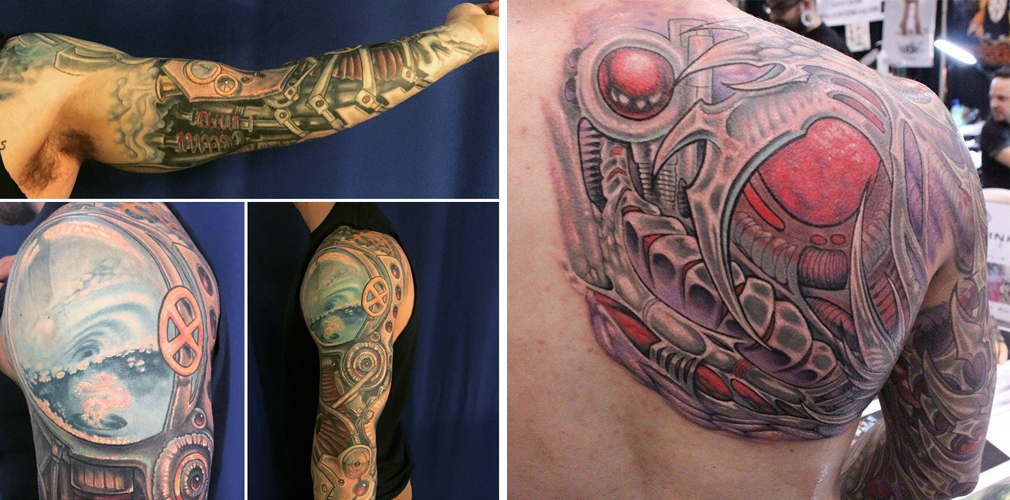
Biomechanical
Similar to Tribal, one of the key elements of Biomechanical is ensuring that the design is customized to the wearer’s body and that it flows and wraps around the canvas effortlessly and naturally, as if it had always been there. Pulling from mechanical imagery, Biomechanical designs often mimic machines and make it seem as if the wearer has cogs and screws under their skin rather than muscles and that they are indeed more machine than human.
